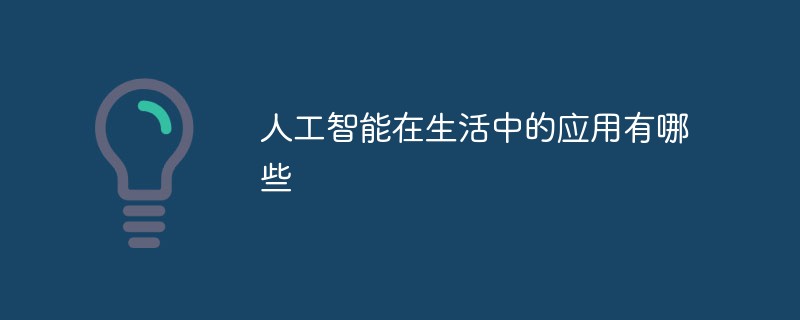
Glaucoma is one of the leading causes of irreversible blindness for many people around the world. Glaucoma is an umbrella term that refers to a group of eye diseases that damage the connection between the eye and the optic nerve in the brain, which in severe cases can lead to vision loss. According to a systematic review and in-depth analysis of the global causes of blindness and long-sightedness disorders by the Brian Holton Vision Institute, glaucoma has become the second leading cause of blindness in the world
In 2020, an estimated 76 million people worldwide are suffering from glaucoma. This number is expected to increase to 111.8 million in 2040. The increased prevalence of glaucoma will have a significant economic impact on the health care system and individual patients. Unfortunately, traditional glaucoma diagnosis and detection techniques have significant limitations in clinical practice. However, the use of artificial intelligence (AI) and deep learning (DL) algorithms in healthcare is expected to improve glaucoma diagnosis and screening
How does artificial intelligence contribute to the diagnosis of eye diseases?
The research team of Nanjing Medical University in China explained and illustrated in detail the process of using artificial intelligence and deep learning-based algorithms to diagnose eye diseases in a recently published article

Flowchart describing the process of building and evaluating deep learning models.
Generally speaking, using AI technology to diagnose glaucoma requires careful processing of a variety of data, including optic disc photos, visual field and intraocular pressure. The algorithm eliminates noise, artifacts and irrelevant information to ensure accurate and reliable results, while training the model to learn the unique characteristics and patterns associated with glaucoma. It is rigorously tested during the validation phase to ensure its effectiveness. Once successful, the entire protocol will be further evaluated in subsequent tests to explore the feasibility of practical application in clinical diagnosis.
If this algorithm can eventually be used in clinical practice, future clinicians will collect indicators such as patients' optic disc photos, visual fields, and intraocular pressure readings, and use the algorithm to diagnose glaucoma lesions after preprocessing
The role of deep learning in glaucoma diagnosis
An important role of deep learning in glaucoma diagnosis is to screen and distinguish eyes suffering from glaucoma from healthy eyes. A deep learning model trained using fundus photographs can identify fundus lesions consistent with glaucoma, including retinal nerve fiber layer abnormalities. This will help diagnose glaucoma earlier and reduce the risk of visual impairment.
In addition, optical coherence tomography (OCT) data can be used to train deep learning algorithms to detect and track the development of microstructural changes caused by glaucoma over time. Experiments have shown that streaming learning algorithms are more accurate than manual or automated segmentation methods in identifying glaucoma symptoms early, according to research from North Carolina's Wake Forest School of Medicine
A research team in Sydney, Australia It was also found in the study that deep learning technology can detect glaucoma lesions from fundus image areas other than the optic nerve head (ONH). In other words, deep learning has broad prospects for widespread clinical application in computer-assisted glaucoma screening and diagnosis. The technology also provides a comprehensive assessment of the retina, helping clinicians detect various early signs of glaucoma that may otherwise go unnoticed.
Advantages of Artificial Intelligence and Deep Learning in Diagnosis
Duke Eye Center at Duke University reviews the advantages of using sophisticated deep learning algorithms for glaucoma diagnosis . They found that these algorithms can diagnose diseases far faster than traditional methods, greatly improving efficiency and speeding up treatment. In addition, these algorithms are more accurate than traditional methods, enabling early detection and intervention to effectively prevent the progression of the disease. All of this will improve patient outcomes and reduce the associated medical costs arising from subsequent treatments. Deep learning algorithms have great potential to expand the coverage of medical services, especially for those living in remote areas. For people who don’t have access to an ophthalmologist. These algorithms can help these patients obtain timely and accurate diagnostic services, improve diagnosis and treatment results, and narrow the gap in medical care. In other words, these algorithms will make eye care more equitable for people around the world
In addition, healthcare professionals can also use deep learning algorithms to maximize control over diagnostic fluctuations and provide more reliable and accurate assessment results. This helps increase confidence in the accuracy of medical diagnoses while improving patient care outcomes.
Challenges in Adopting Deep Learning in Clinical Practice
Although good results have been achieved in experiments, there are challenges when using deep learning algorithms to detect glaucoma in clinical practice. , also faces a series of practical challenges that need to be solved
After rewriting: One of the main core challenges is standardizing the data sets used for algorithm training. Since there are often huge differences in data collection techniques and formats used by different research institutions and medical institutions, it is necessary to establish a standardized data set specifically for training glaucoma diagnostic algorithms
For issues other than data standardization, another The big challenge is ensuring that healthcare providers can easily adopt these algorithms. Despite the great potential for glaucoma detection, the algorithms themselves are often complex to deploy and use and are not suitable for all healthcare professionals, especially those in remote or underserved areas. Therefore, user-friendly interfaces and tools must be developed to ensure that healthcare providers from different backgrounds and locations can effectively use deep learning algorithms to successfully detect target audiences with glaucoma
AlsoPatientsA Bright Future
Glaucoma is an important disease causing blindness and disability worldwide. Its prevalence will further increase in the coming years, with a major impact on the healthcare system and individual patients. Correspondingly, the development and popularization of AI and deep learning algorithms in the medical care field is expected to greatly improve the diagnostic efficiency and detection accuracy of glaucoma. These algorithms can provide faster and more reliable diagnostic conclusions, improve access to diagnostic and treatment resources for underserved populations, and reduce large fluctuations in diagnostic results.
Before deep learning algorithms can be widely used in clinical glaucoma detection, we first need to solve a series of real-world challenges. One of the challenges is focusing on data standardization, and another is improving the accessibility of services. As long as we can properly address these challenges, we are expected to apply deep learning algorithms extensively and accurately in clinical practice, paving the way for early detection and treatment of glaucoma
The above is the detailed content of Data-driven diagnosis using deep learning methods in glaucoma detection. For more information, please follow other related articles on the PHP Chinese website!
 2023年机器学习的十大概念和技术Apr 04, 2023 pm 12:30 PM
2023年机器学习的十大概念和技术Apr 04, 2023 pm 12:30 PM机器学习是一个不断发展的学科,一直在创造新的想法和技术。本文罗列了2023年机器学习的十大概念和技术。 本文罗列了2023年机器学习的十大概念和技术。2023年机器学习的十大概念和技术是一个教计算机从数据中学习的过程,无需明确的编程。机器学习是一个不断发展的学科,一直在创造新的想法和技术。为了保持领先,数据科学家应该关注其中一些网站,以跟上最新的发展。这将有助于了解机器学习中的技术如何在实践中使用,并为自己的业务或工作领域中的可能应用提供想法。2023年机器学习的十大概念和技术:1. 深度神经网
 人工智能自动获取知识和技能,实现自我完善的过程是什么Aug 24, 2022 am 11:57 AM
人工智能自动获取知识和技能,实现自我完善的过程是什么Aug 24, 2022 am 11:57 AM实现自我完善的过程是“机器学习”。机器学习是人工智能核心,是使计算机具有智能的根本途径;它使计算机能模拟人的学习行为,自动地通过学习来获取知识和技能,不断改善性能,实现自我完善。机器学习主要研究三方面问题:1、学习机理,人类获取知识、技能和抽象概念的天赋能力;2、学习方法,对生物学习机理进行简化的基础上,用计算的方法进行再现;3、学习系统,能够在一定程度上实现机器学习的系统。
 超参数优化比较之网格搜索、随机搜索和贝叶斯优化Apr 04, 2023 pm 12:05 PM
超参数优化比较之网格搜索、随机搜索和贝叶斯优化Apr 04, 2023 pm 12:05 PM本文将详细介绍用来提高机器学习效果的最常见的超参数优化方法。 译者 | 朱先忠审校 | 孙淑娟简介通常,在尝试改进机器学习模型时,人们首先想到的解决方案是添加更多的训练数据。额外的数据通常是有帮助(在某些情况下除外)的,但生成高质量的数据可能非常昂贵。通过使用现有数据获得最佳模型性能,超参数优化可以节省我们的时间和资源。顾名思义,超参数优化是为机器学习模型确定最佳超参数组合以满足优化函数(即,给定研究中的数据集,最大化模型的性能)的过程。换句话说,每个模型都会提供多个有关选项的调整“按钮
 得益于OpenAI技术,微软必应的搜索流量超过谷歌Mar 31, 2023 pm 10:38 PM
得益于OpenAI技术,微软必应的搜索流量超过谷歌Mar 31, 2023 pm 10:38 PM截至3月20日的数据显示,自微软2月7日推出其人工智能版本以来,必应搜索引擎的页面访问量增加了15.8%,而Alphabet旗下的谷歌搜索引擎则下降了近1%。 3月23日消息,外媒报道称,分析公司Similarweb的数据显示,在整合了OpenAI的技术后,微软旗下的必应在页面访问量方面实现了更多的增长。截至3月20日的数据显示,自微软2月7日推出其人工智能版本以来,必应搜索引擎的页面访问量增加了15.8%,而Alphabet旗下的谷歌搜索引擎则下降了近1%。这些数据是微软在与谷歌争夺生
 荣耀的人工智能助手叫什么名字Sep 06, 2022 pm 03:31 PM
荣耀的人工智能助手叫什么名字Sep 06, 2022 pm 03:31 PM荣耀的人工智能助手叫“YOYO”,也即悠悠;YOYO除了能够实现语音操控等基本功能之外,还拥有智慧视觉、智慧识屏、情景智能、智慧搜索等功能,可以在系统设置页面中的智慧助手里进行相关的设置。
 人工智能在教育领域的应用主要有哪些Dec 14, 2020 pm 05:08 PM
人工智能在教育领域的应用主要有哪些Dec 14, 2020 pm 05:08 PM人工智能在教育领域的应用主要有个性化学习、虚拟导师、教育机器人和场景式教育。人工智能在教育领域的应用目前还处于早期探索阶段,但是潜力却是巨大的。
 30行Python代码就可以调用ChatGPT API总结论文的主要内容Apr 04, 2023 pm 12:05 PM
30行Python代码就可以调用ChatGPT API总结论文的主要内容Apr 04, 2023 pm 12:05 PM阅读论文可以说是我们的日常工作之一,论文的数量太多,我们如何快速阅读归纳呢?自从ChatGPT出现以后,有很多阅读论文的服务可以使用。其实使用ChatGPT API非常简单,我们只用30行python代码就可以在本地搭建一个自己的应用。 阅读论文可以说是我们的日常工作之一,论文的数量太多,我们如何快速阅读归纳呢?自从ChatGPT出现以后,有很多阅读论文的服务可以使用。其实使用ChatGPT API非常简单,我们只用30行python代码就可以在本地搭建一个自己的应用。使用 Python 和 C
 人工智能在生活中的应用有哪些Jul 20, 2022 pm 04:47 PM
人工智能在生活中的应用有哪些Jul 20, 2022 pm 04:47 PM人工智能在生活中的应用有:1、虚拟个人助理,使用者可通过声控、文字输入的方式,来完成一些日常生活的小事;2、语音评测,利用云计算技术,将自动口语评测服务放在云端,并开放API接口供客户远程使用;3、无人汽车,主要依靠车内的以计算机系统为主的智能驾驶仪来实现无人驾驶的目标;4、天气预测,通过手机GPRS系统,定位到用户所处的位置,在利用算法,对覆盖全国的雷达图进行数据分析并预测。


Hot AI Tools

Undresser.AI Undress
AI-powered app for creating realistic nude photos

AI Clothes Remover
Online AI tool for removing clothes from photos.

Undress AI Tool
Undress images for free

Clothoff.io
AI clothes remover

AI Hentai Generator
Generate AI Hentai for free.

Hot Article

Hot Tools

Notepad++7.3.1
Easy-to-use and free code editor

SAP NetWeaver Server Adapter for Eclipse
Integrate Eclipse with SAP NetWeaver application server.

EditPlus Chinese cracked version
Small size, syntax highlighting, does not support code prompt function

PhpStorm Mac version
The latest (2018.2.1) professional PHP integrated development tool

SublimeText3 Chinese version
Chinese version, very easy to use







